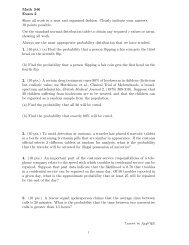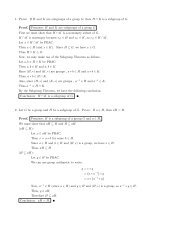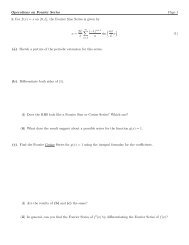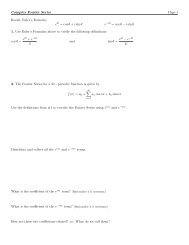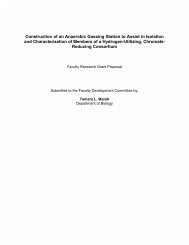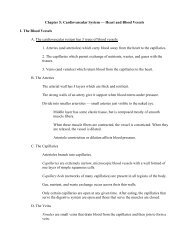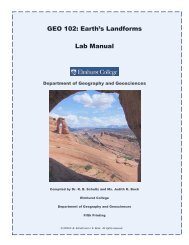Free Executive Summary - Elmhurst College
Free Executive Summary - Elmhurst College
Free Executive Summary - Elmhurst College
You also want an ePaper? Increase the reach of your titles
YUMPU automatically turns print PDFs into web optimized ePapers that Google loves.
Learning to Think Spatially: GIS as a Support System in the K-12 Curriculum<br />
http://www.nap.edu/catalog/11019.html<br />
SPATIAL THINKING IN EVERYDAY LIFE, AT WORK, AND IN SCIENCE 81<br />
Consider the example of global atmospheric circulation. Certainly, the existence and orientation<br />
of trade winds, a fundamental observation, was known from long ago. Yet the northward<br />
counterflow at high altitude cannot have been documented observationally by those pioneers; they<br />
must have inferred it and included it in their mental picture because the picture did not make<br />
physical sense without it. Some of the great leaps of visualization of three-dimensional Earth<br />
processes have progressed by a hybrid process, in which the visualization is partly shaped by data<br />
and observations and partly by intuitive understanding of driving forces. Modern models of oceanic<br />
and atmospheric circulation try to formalize this hybrid cognitive process. The models are built<br />
around equations that purport to represent physical forces, and then data are used to “train” the<br />
models through a process of “data assimilation.”<br />
Envisioning the Processes by Which Objects Change Shape<br />
Whereas the fluid parts of the Earth system generally respond to imposed forces by moving<br />
through space, the solid parts may respond by changing their shape, by deforming, by folding, and<br />
by faulting. After struggling to visualize the internal three-dimensional structure of a rock body, the<br />
geologist’s next step is often to try to figure out the sequence of folding and faulting events that has<br />
created the observed structures. This task may be attacked either forwards or backwards: backwards,<br />
by “unfolding” the folds and “unfaulting” the faults; or forwards, by applying various<br />
combinations of folds and faults to an initially undeformed sequence of rock layers until you find a<br />
combination that resembles the observed structure (Figure 3.27). The forward approach resembles<br />
the paper-folding task used by psychologists who study spatial thinking (see Chapter 2).<br />
Elements of solid Earth also change their shape through erosion, through the uneven removal<br />
of parts of a whole. Thinking about eroded terrains requires the ability to envision negative spaces,<br />
the shape and internal structure of the material that is no longer present.<br />
Using Spatial Thinking to Think About Time<br />
It is common in thinking about Earth to find that variation or progression through space is<br />
closely connected with variation or progression through time. For example, within a basin of<br />
undeformed sedimentary rocks, the downward direction corresponds to increasing time since deposition.<br />
On the seafloor, distance away from the mid-ocean ridge spreading center corresponds to<br />
increasing time since the formation of that sliver of seafloor.<br />
As a consequence, geologists often think about distance in space when they really want to think<br />
FIGURE 3.27 Mentally manipulating a volume by folding, faulting, and eroding: geometry of the lower<br />
duplex at Hénaux. SOURCE: Ramsay and Huber, 1987. Copyright 1987, reprinted with permission from<br />
Elsevier.<br />
Copyright © National Academy of Sciences. All rights reserved.



